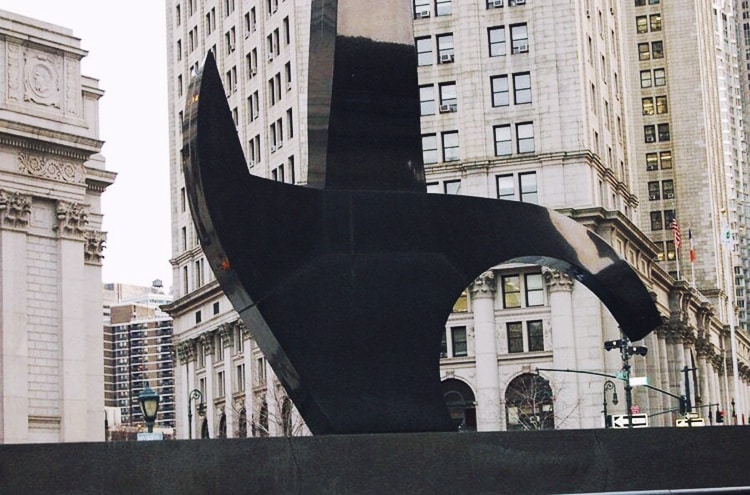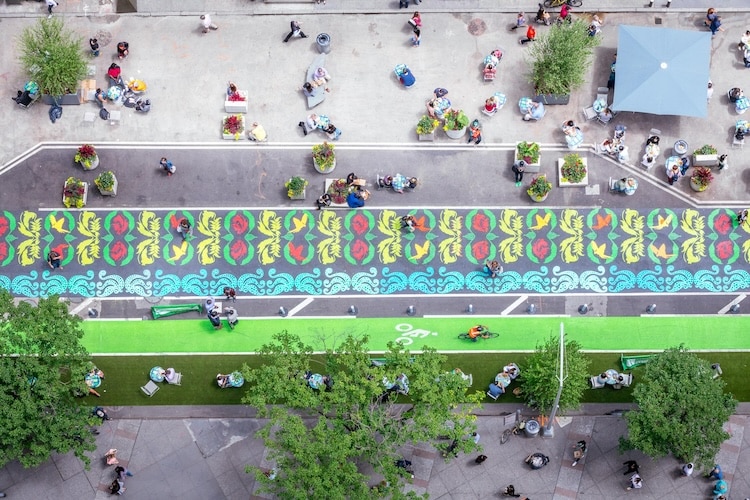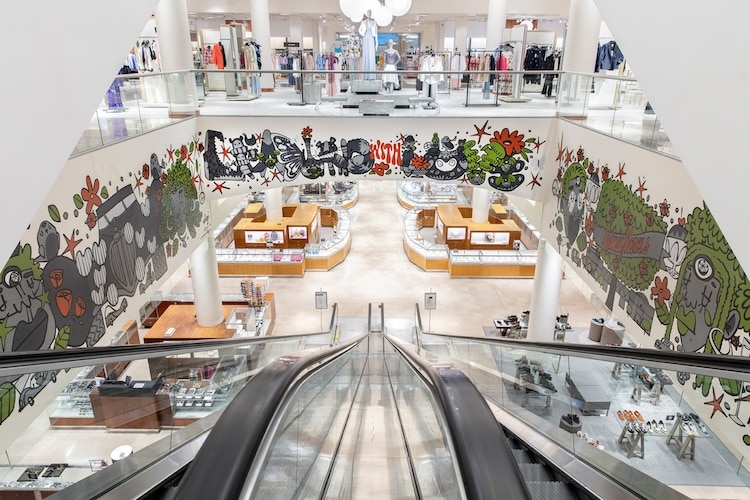Walk around any major city, and you’ll likely encounter a striking public art commission that turns an overlooked spot into a memorable landmark. From expansive murals in San Francisco to interactive sculptures in Chicago’s Millennium Park, these artworks infuse the urban landscape with character and charm. For residents and tourists, it’s about seeing their city in a new light, and appreciating the added beauty and character.
Artists, on the other hand, should see these art installations as opportunities to advance their careers. Winning a public art commission can help an artist gain more attention, reach a wider audience of potential art buyers and collectors, and strengthen an artist’s position within the art community.
The Rise of Public Art Commissions in the U.S.
The U.S. has backed public art for a long time, with roots going back to the 1930s. The New Deal era under President Roosevelt was a turning point when the country started placing a higher value on its cultural treasures. This era gave birth to the Art-in-Architecture (A-i-A) program, which set a precedent for allocating a part of the budget from government building projects for art. Today, that support for public art is as strong as ever.
Between city and state programs, community groups, art councils, and educational institutions, artists of all styles and experience levels can apply for thousands of art commissions each year.

African-American sculptor Lorenzo Pace created commission as part of the “Percent for Art” Program.
Artists have a wide range of public art commission opportunities to explore. Many local communities seek murals, both modest and expansive, that echo their local traditions and values. There’s also a strong interest in both abstract and realistic sculptures to beautify public areas. Beginners can find chances in projects like designing benches for community parks, creating unique signs for trails, or adding color to utility boxes. Meanwhile, seasoned artists might be approached for larger installations at city events or festivals. With numerous art commissions available, artists of all backgrounds and expertise can discover a project that aligns with their skills.
Applying for Art Commissions
Public art commissions have been a cornerstone in the U.S. art scene, offering artists a platform to showcase their work in public spaces. While the application process may vary across regions, there’s a general structure that most organizations follow.
The process from the Garment District Alliance, a nonprofit group that promotes and supports the business improvement, economic growth, and cultural development of the Garment District in New York City, is a good example. The Alliance regularly releases a Request for Qualifications when scouting for innovative artists. This isn’t a seasonal occurrence but is announced on the Alliance’s website. It’s also shared through the New York Foundation for the Arts, Sculpture magazine, and a network of art enthusiasts.
This Request for Qualifications is thorough. It probes artists about their proposed project, mandates a budget (up to $50,000), and requires supplementary materials like a CV, artist biography, and a portfolio of up to 12 previous works. Jerry Scupp, a key figure at the Alliance, emphasizes the importance of the public space experience. “It’s distinct from a museum setting. We need to ensure the artist’s work is durable, suitable for the space, and that they have the expertise to execute it.”
After the application deadline, the selection process begins. Scupp, along with a team of art experts, sifts through the applications, narrowing down to a handful of finalists. “We delve deeper into their proposals at this stage,” Scupp notes. An arts advisory panel, comprising members from various art organizations, reviews these refined proposals. Their recommendations are pivotal. After receiving their endorsement, the City of New York gives the final approval, after which the art commissions are officially formalized.

A Memorial Bowing sponsored by Miami’s Art in Public Places commemorates the Orange Bowl Stadium, home of the Miami Hurricanes football team for over seven decades until it was demolished in 2008
A similar process is observed in Miami’s Art in Public Places program. Amanda Sanfilippo, who oversees the program, manages all of Miami-Dade’s public art domains. Their website frequently updates with new calls for artists. The program’s selection procedure involves an independent Professional Advisory Committee (PAC). This committee, after understanding the project’s essence, releases a Request for Qualifications or Proposal. Artists’ submissions are evaluated based on their aesthetic appeal and vision. The PAC’s recommendations are then presented to the Art in Public Places Trust, which finalizes the shortlisted artists.
Once an artist secures a commission, they’re briefed about the project’s specifics – budget, site details, and overall scope. Site visits, and interactions with architects and planners are common. The artist then presents their concept to the PAC selection committee. Effective communication is crucial here. Artists employ various tools – blueprints, maquettes, digital imagery, and material samples – to convey their vision.
Both in the Garment District and Miami-Dade County, the final say rests with an independent review board. However, Scupp offers a piece of advice for aspiring artists. “Consider the space, the past installations, the materials, and the colors used. Understand the venue’s identity. The artwork should engage with the environment and stir thoughts.”
In essence, while the application process for art commissions might seem challenging, it’s a structured procedure that seeks to find the best fit for a given space. For artists, it’s a chance to leave a lasting imprint on a public area, one that can make a dramatic difference in their future prospects.
Grasping the Technicalities of Art Commissions
Art commissions, whether grand installations in city centers or smaller projects in local communities, come with their own set of technical challenges. Scupp provides insights into these complexities, emphasizing that artists, regardless of the scale of their projects, need to be prepared for various logistical considerations. “Artists must factor in shipping and installation expenses. Even smaller public art pieces might require transportation and potentially specialized engineering for mounting,” he points out. Additionally, since these artworks are often returned to the artist after display, providing proof of insurance is essential.

“Ararauna” by Patricia Cazorla & Nancy Saleme. Commissioned by the Garment District Alliance.
Large Scale Commissions
On the brighter side, government agencies and local councils offering art commissions often shoulder some of the burdens. They might cover engineering costs, provide an on-site engineer for the installation, and even extend marketing support to highlight the artwork during its tenure. This support can be especially beneficial for emerging artists undertaking their first public projects.
However, one issue with publicly funded projects is there is often financial pressure on the organizations that are hiring artists for the work. While artists might expect to get the fee presented in their initial budget proposal, the reality is that they can be scaled down due to the financial contracts of these organizations. Artists need to weigh the promotional opportunity from the project and the potential gains they can receive from future projects.
Scupp notes that the costs of even smaller art installations can sometimes exceed the artist’s initial budget. “We always strive to ensure artists don’t face financial losses. Yet, there have been instances where some had to stretch their resources during fabrication. But the trade-off is the unparalleled exposure they gain. Think about it: over 50,000 individuals might engage with your artwork daily. That level of visibility is a game-changer, especially for artists looking to make a mark,” Scupp emphasizes.
Moreover, artists should be diligent about carefully reviewing the terms of their agreements to ensure that they aren’t giving away too many rights that could affect their future projects. For temporary installations, which might be more common for artists just starting out, they typically retain all rights to their work. But for larger, permanent installations, artists might have to navigate more complex rights issues, such as opposing potential future destruction of the artwork or understanding copyright nuances.
For example, if the project required that the copyright in the work be transferred to the hiring organization, then that also gives the organization the right to stop anyone, including the artist, from making a copy of the work or creating derivatives of the work. If the commission is created in a distinctive style that is representative of much of the artist’s works, then technically, the organization could stop the artist from producing works that look too much like the one they own. If the organization demands ownership, the contract could be written in a way that still protects the artist’s right to create more work in that distinctive style.
Bespoke Art Opportunities
While commissions from entities like the Garment District Alliance are well-known, there exists a spectrum of opportunities in the commercial sector that might be more accessible and less bureaucratic. From retail giants to boutique hotels, many businesses seek art commissions for their spaces, ranging from murals to interactive installations.

All I See is You & I (2023) by Tony Whlgn for Neiman Marcus, Troy. Curated by ATP.art.
These commissions can be just as lucrative and impactful as larger public projects but might come with fewer hoops to jump through.For artists, exploring local business networks, attending industry events, or even directly contacting businesses can uncover these opportunities.
Additionally, there are companies like ATP.art, the commercial division of Artrepreneur, that collaborate with businesses, particularly those lacking the infrastructure or expertise to commission art, further expanding the avenues available to artists.
ATP.art has successfully executed numerous art commissions, catering to diverse commercial spaces. Some notable projects include:
ATP.art adopts a distinct approach compared to other art consultancies. When they spot a demand for art commissions from their clients, they launch an Open Call through their Open Call Directory. ATP.art’s Open Call system streamlines the application process, eliminating the typical hurdles artists face with traditional commission applications. Their team of curators rigorously assesses each submission, selecting artists whose creations closely match the client’s requirements.
Once an artist is selected, ATP.art’s curatorial team works closely with them to develop a comprehensive proposal. This encompasses an illustrative sketch of the proposed commission, its envisioned placement within the commercial space, a timeline for both creation and installation and a pricing structure. This collaborative process ensures that both the client’s and artist’s visions harmonize, leading to the final approval of the project.
For businesses contemplating the idea of commissioning art but feeling uncertain about the process, ATP.art not only offers a comprehensive guide titled Commissioning Custom Art For Businesses: A Comprehensive Guide., but they also provide direct consultation and services to assist businesses in this endeavor. This dual approach ensures that companies aiming to enrich their commercial spaces with bespoke art have the knowledge and the resources at their fingertips.
Reflecting on Public Art Opportunities
The world of art commissions is vast and varied, offering many opportunities for artists at every stage of their careers. From the grandeur of city center installations to the intimacy of local community projects, each commission tells a story, reflects a community’s identity, and leaves an indelible mark on the landscape. As cities and communities continue to recognize the value of public art, the demand for unique and impactful installations will only grow.
For artists, the journey of securing and executing a public art commission can be both challenging and rewarding. While the technical and financial aspects require careful consideration, the exposure, recognition, and sheer joy of seeing one’s work in a public space make it all worthwhile.
As we reflect on the transformative power of public art, we must ask ourselves: How can artists further leverage these opportunities to not only enhance public spaces but also elevate their careers? And for those who’ve experienced the magic of public art, either as creators or admirers, what are your thoughts on the future of art commissions? How do you envision the evolution of public art in the years to come?
We invite you to share your insights, experiences, and aspirations in the comments below. Let’s foster a vibrant discussion on the future of art commissions and the endless possibilities they hold.
